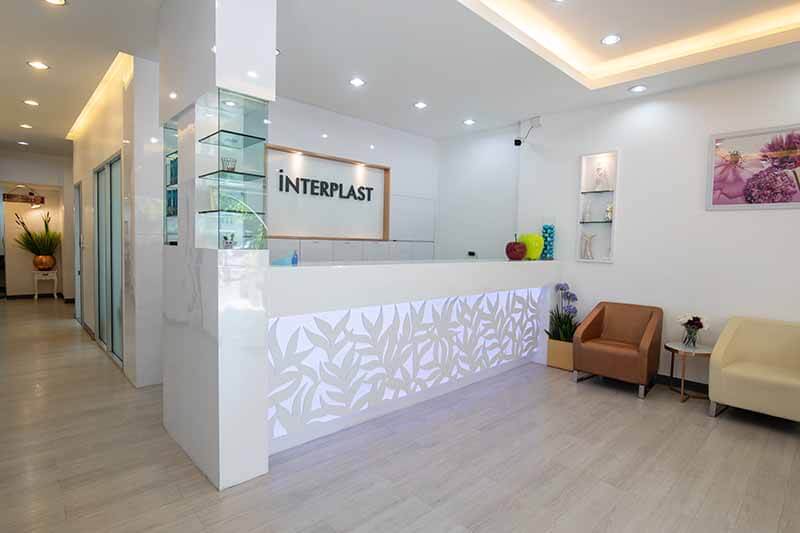Full Facelift vs. Mid Facelift: What's the Difference?
Who wouldn’t want to turn back the clock on aging? Turns out, with a few nips and tucks, you can. Thanks to the brilliance of modern plastic surgery, facelifts are making a comeback. According to The American Society for Aesthetic Plastic Surgery, the number of facelifts performed between 2020 and 2021 soared by 54%.
Rather than relying on short-term (and extremely costly) fixes, people are turning to the facelift for long-lasting results.
Table of Contents
However, the procedure itself has had some work done – with several new “types” of procedures available. There’s a big debate between the full facelift vs the mid-facelift, involving the pros and cons of each option. So, what’s the difference? And which one is right for you?
In this guide, you’ll find:
- Understanding Full Facelifts
- Understanding Mid Facelifts
- Full Facelift vs. Mid Facelift: Which is Better?
- Full Facelift vs. Mid Facelift: Comparing Recovery Times
- How to Decide Between a Mid Facelift and a Full Facelift

Understanding Full Facelifts
The full facelift – as the name implies – addresses all aspects of your face, including the lower face, jawline, jowls, midface, cheeks, and even the neck. More extensive than its counterpart, the procedure involves incisions in front of and behind the ears, around the hairline, and possibly under the chin.
The surgeon can reposition deeper tissues, remove excess skin, and tighten the remaining skin for a more youthful appearance. The finished results? Fewer wrinkles and less sagging skin and jowls.
The only real downside is the recovery time – as people can spend several weeks or even months healing until the swelling is gone and full results can be seen.
Understanding Mid Facelifts
Unlike the more invasive full facelift, mid-facelifts focus on elevating the upper part of the face. Technically, there’s no medical difference between the two procedures. However, it’s generally accepted that mid-facelifts are less invasive.
The objective of this procedure is to target the area between the lower eyelids and mouth – along with the nasolabial folds or laugh lines that run from the nose to the corners of the mouth. Mid-facelift incisions are usually smaller and are made around the hairline and in the lower eyelids. The surgeon may reposition fat and muscles in the cheeks to enhance facial contours and reduce sagging or hollowness.
The obvious benefit is the faster recovery time. Patients may still experience some swelling and bruising. However, the healing process is much quicker, lasting only a few weeks in most cases.
Full Facelift vs. Mid Facelift: Which is Better?
Deciding between a full facelift and a mid-facelift boils down to your goals and concerns. Most people have a specific look they want to achieve and should consult with their surgeon to achieve this. As a general rule, full facelifts are best for people experiencing more considerable signs of aging.
On the other hand, a mid-facelift works wonders if your biggest concern is around your cheeks and lower eyelids. Crow’s feet, laugh lines, and other finer wrinkles can be completely eliminated.
Consider these factors as you make your decision. There is no right or wrong answer; only what’s best for you. So, don’t feel any pressure towards one option or the other.
Full Facelift:
- Best for Comprehensive Rejuvenation:
If you’re seeking a thorough overhaul that addresses sagging skin, deep wrinkles, jowls, and aging around the neck, a full facelift is likely the better choice. It’s designed for those who want to tackle signs of aging across their entire face and neck. - Consider the Downtime:
A full facelift requires a more extended recovery period. This means you’ll need to be prepared for several weeks of healing, during which you may experience significant swelling and bruising. The results, however, are more dramatic and long-lasting.
Mid Facelift:
- Targeted Approach for Midface Aging:
If your primary concerns are centered around the cheeks, lower eyelids, and nasolabial folds, a mid-facelift could be the ideal solution. This procedure is particularly effective for those looking to lift and rejuvenate the midsection of their face without addressing the lower face or neck. - Shorter Recovery Time:
Since mid-facelifts are less invasive, the recovery time is shorter. Patients can expect a quicker return to their daily routines, with most of the swelling and bruising subsiding within a few weeks.
Which is better?
The better question is, what do you want to achieve? Some people want to minimize any signs of aging, while others simply want a quick “nip and tuck” to reverse a few years. Factor in the downtime, costs, and final look when making your decision. There’s also the chance of scarring – mid-facelift incisions are smaller, heal better, and are more easily concealed.
Full Facelift vs. Mid Facelift: Comparing Recovery Times
Recovery times are a big difference between the two procedures. Both procedures require some healing, but the duration and intensity of the recovery process vary significantly.
Full facelifts, due to their more invasive nature, can take several weeks to a few months to recover. Usually, you’ll see a significant reduction in swelling and bruising within the first two weeks.
After this point, people can return to light activities. However, it will still be several weeks before your face fully settles into the final result. Throughout this period, you’ll need to see your surgeon so they can monitor your progress periodically.
Mid-facelifts, however, have a much quicker turnaround time. Mid-facelift incisions are smaller, and the procedure involves less of the face and underlying tissues. Swelling and bruising will subside more quickly, and patients frequently resume normal activities within two to three weeks post-surgery.
Most of the healing occurs within the first month – but results will continue to develop over the following few weeks.
How to Decide Between a Mid Facelift and a Full Facelift
The older you are, the more likely you are to need a full facelift. But that’s not always the case – chronological age isn’t everything. Some people in their mid to late forties, for instance, could experience heavy jowling, requiring a full facelift. Meanwhile, someone in their 50s could only have a few lines or wrinkles in the eyes and cheeks.
It’s 100% case-dependent.
Consult with a qualified plastic surgeon at Interplast Clinic to determine the best treatment plan for you. Dr. Theerapong has extensive experience in facial plastic surgery; he can help you consider the pros and cons of each procedure and factor them into your lifestyle.














